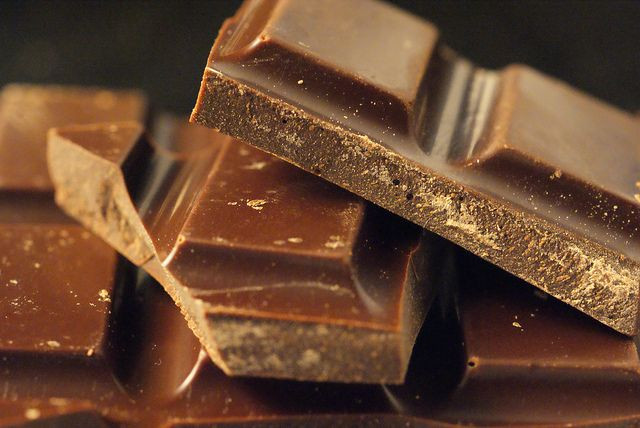Dark Chocolate Beats Out Milk Chocolate For Heart Health But Isn’t King Of Polyphenols Overall

For years, a bar of dark chocolate and a glass of red wine have been lauded as not only a romantic indulgence but a genuine boost for your heart health. Study after study has shown antioxidant compounds, known as polyphenols, allow blood vessels to dilate, reducing blood pressure. If the data is anything to go by, however, dark chocolate marketers may deserve a raise, as the cocoa-based food barely reaches the top 10 in polyphenol count.
The most recent study into dark chocolate’s beneficial effects comes from Sapienza University. It found people with peripheral artery disease (PAD) who walked on a treadmill after eating dark chocolate, which contained 85 percent cocoa, walked 11 percent farther than people given milk chocolate, which was only 30 percent cocoa. It was the cocoa powder, the team found, that reduced oxidation in the blood. This upped the production of nitric oxide, a gas that expands blood vessels and makes blood flow easier.
If it’s polyphenols you’re after, dark chocolate isn’t the first place you should turn. Or the second. Or third, or fourth, or fifth. According to the European Journal of Clinical Nutrition (EJCN), dark chocolate contains 1,664 milligrams (mg) of polyphenols per 100 grams (g). That puts it in eighth place out of the top 100 foods. Cocoa powder, the root of dark chocolate’s power, comes in fourth, at 3,448mg per 100g. So what beats them all? Cloves, of all things.
As far as seasonings go, cloves are far and away the richest source of polyphenols you can get. At 15,188mg per 100g (that’s 15 grams of polyphenols for every 100g), cloves eclipse the runner-up, dried peppermint, by a margin greater than cocoa powder’s entire polyphenol content. Cloves also rank number one in antioxidant count, at 16,047mg. Cocoa powder and dark chocolate rank 24 and 13, respectively, at 1,104mg at 1,860mg. (For you curious vino fans out there, 100 mL of red wine, a standard serving, falls at 53rd for polyphenols and 39th for antioxidants.)
For all the scientific inquiry into dark chocolate’s mysterious vitality, the research remains light on polyphenols’ true benefits. Scientists accept the basic idea that some polyphenol consumption is better than none; what they don’t know is how much is enough, and whether there exists such as thing as too much.
A common point of research in this area involves a chemical known as ellagic acid. You’ll find it in most of the berries you eat: raspberries, strawberries, cranberries, blueberries. It also lives in walnuts, pecans, and pomegranates. The American Cancer Society recognizes ellagic acid’s antioxidant power and in some cases even its cancer-fighting power, most notably in prostate cancer. Most ellagic acid research has been limited to cell cultures or lab animals, where scientists have observed the chemical to reduce tumor growth and shrink harmful tissue.
Does all this mean you should abandon dark chocolate altogether? Not exactly. The EJCN rankings may place dark chocolate well behind cloves, but no one is eating the two in equal quantities. Even if you were to use a tablespoon of cloves in a meal, or for some reason eat them on their own, you’d only be getting 14.3g of the spice, or 2,172mg of polyphenols. Your ordinary bar of dark chocolate is 100g on its own — a mere 500mg fewer polyphenols. That’s with a single bar and a tablespoon of cloves. Call us gluttons, but we think we’ll stick with the chocolate. Now, where’s that 100mL of red wine?



























